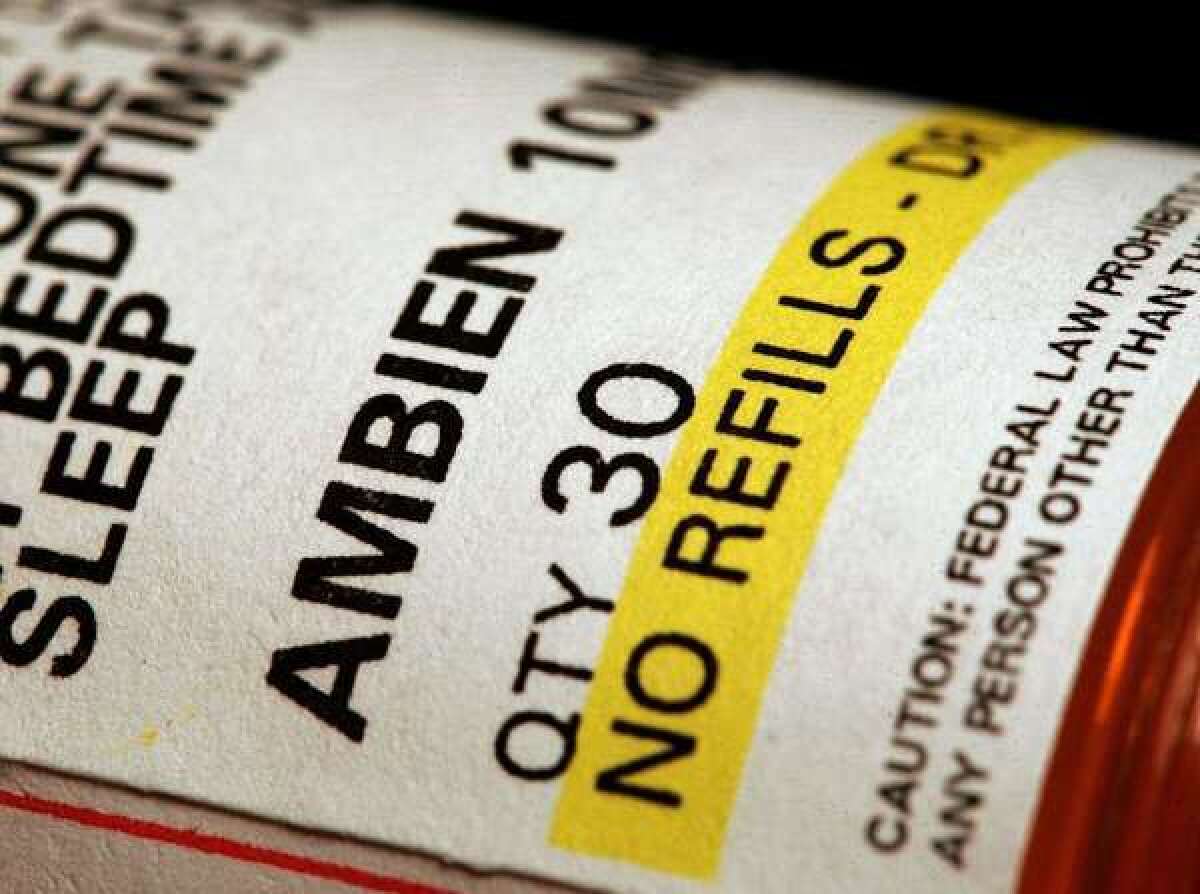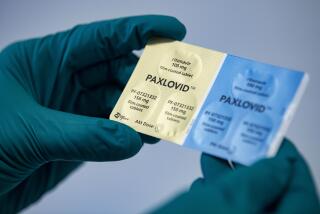CDC says 1 in 25 Americans uses sleeping pills to catch their zzzzzs

- Share via
About one in 25 American adults takes sleeping pills to help them fall asleep and stay asleep at night, according to new data from the Centers for Disease Control and Prevention.
Researchers from the CDC’s National Center for Health Statistics examined surveys of adults ages 20 and older who were asked whether they had taken a prescription sleep aid in the previous 30 days. The experts found some distinct patterns among sleeping pill users:
-- Women were more likely to use sleeping pills than men (5% of women used them, along with 3.1% of men).
-- People over the age of 50 were more likely to take sleeping pills than younger folks. Six percent of people in their 50s used the pills, along with 5.5% of adults in their 60s, 5.7% of those in their 70s and 7% of those in their 80s. By comparison, only 1.8% of people in their 20s or 30s took the pills.
-- Whites were more likely to use sleeping pills than blacks or Mexican-Americans (4.7% of non-Latino whites took the pills, along with 2.5% of non-Latino blacks and 2% of Mexican-Americans).
-- People with more degrees were more likely to take sleeping pills (4.4% of Americans who had schooling beyond high school used them, along with 3.9% of those with just a high school diploma and 3% of people who didn’t finish high school).
-- Perhaps not surprisingly, people who had been diagnosed with a sleep disorder or who told their doctor they had trouble sleeping were far more likely to use the pills compared to people without a medical need.
These results were culled from the CDC’s National Health and Nutrition Examination Survey. Researchers focused on the years 2005 to 2010.
The new report marks the first time government experts have tallied the use of prescription sleep aids in America. Previous reports have measured the number of prescriptions filled, but that didn’t show whether the pills were actually taken.
Return to Science Now.







